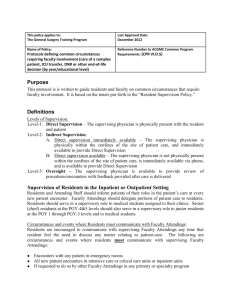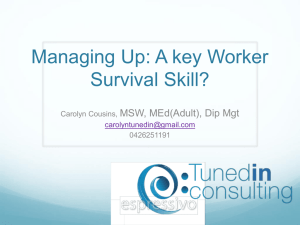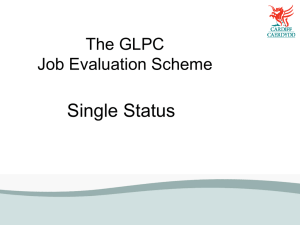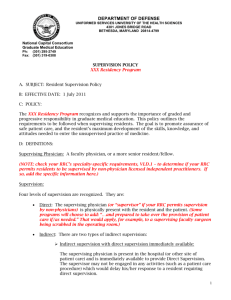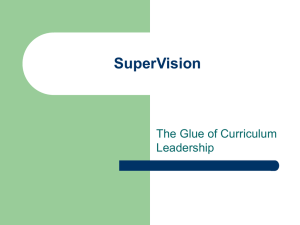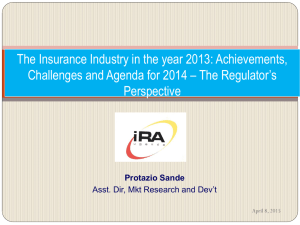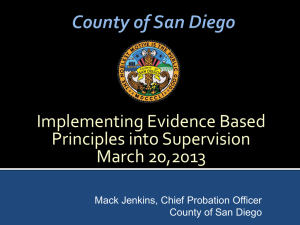Supervision - VCU School of Medicine
advertisement
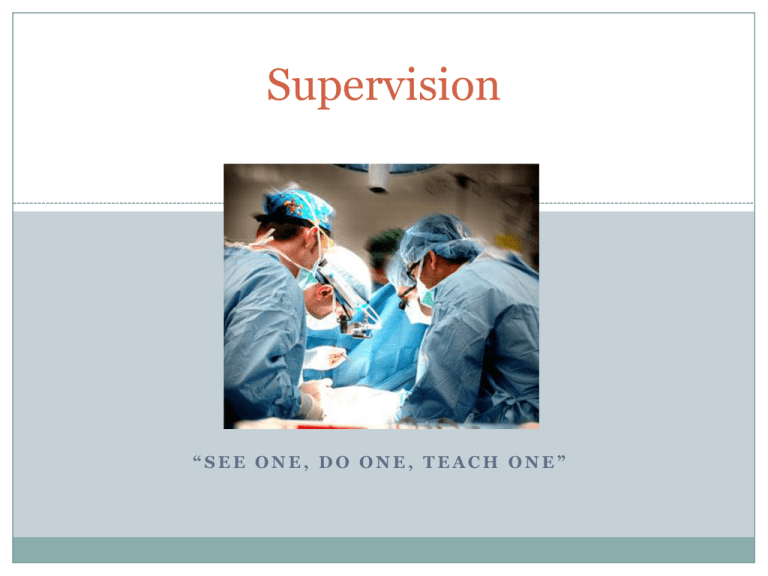
Supervision “SEE ONE, DO ONE, TEACH ONE” Libby Zion Case Issue of work hours galvanized the press and the public and led to subsequent major reforms However, the original grand jury indictment noted that “the most serious deficiencies can be traced to the practice permitting…interns and junior residents to practice medicine without supervision.” The underlying philosophy specialty education of physicians to practice independently is experiential, and necessarily occurs within the context of the health care delivery system requires the resident physician to assume personal responsibility for the care of individual patients the essential learning activity is interaction with patients under the guidance and supervision of faculty members who give value, context, and meaning to those interactions This concept—graded and progressive responsibility—is one of the core tenets of American graduate medical education Goals of Supervision assuring the provision of safe and effective care to the individual patient assuring each resident’s development of the skills, knowledge, and attitudes required to enter the unsupervised practice of medicine establishing a foundation for continued professional growth Common Program Requirements VI.D. Supervision of Residents (p 14) In the clinical learning environment, each patient must have an identifiable, appropriatelycredentialed and privileged attending physician (or licensed independent practitioner as approved by each Review Committee) who is ultimately responsible for that patient’s care. Provision of Supervision Who? Faculty member More advanced resident or fellow How and by what means? Physically present Immediate availability (in the institution or by means of telephonic +/- electronic modality) Post-hoc review with feedback Levels of Supervision Direct Indirect With direct supervision immediately available With direct supervision available Oversight “Direct Supervision” The supervising physician is physically present with the resident and patient. “Indirect Supervision” with direct supervision immediately available the supervising physician is physically within the hospital or other site of patient care, and is immediately available to provide Direct Supervision. “Indirect Supervision” with direct supervision available – the supervising physician is not physically present within the hospital or other site of patient care, but is immediately available by means of telephonic and/or electronic modalities, and is available to provide Direct Supervision. “Oversight” The supervising physician is available to provide review of procedures/encounters with feedback provided after care is delivered More about interns… In particular, PGY-1 residents should be supervised either directly or indirectly with direct supervision immediately available. Each Review Committee will describe the achieved competencies under which PGY-1 residents progress to be supervised indirectly, with direct supervision available. Progressive Authority and Responsibility Standards The privilege of progressive authority and responsibility, conditional independence, and a supervisory role in patient care delegated to each resident must be assigned by the program director and faculty members. Progressive Authority and Responsibility Standards The program director must evaluate each resident’s abilities based on specific criteria. When available, evaluation should be guided by specific national standards-based criteria. Progressive Authority and Responsibility Standards Senior residents or fellows should serve in a supervisory role of junior residents in recognition of their progress toward independence, based on the needs of each patient and the skills of the individual resident or fellow Communication guidelines Programs must set guidelines for circumstances and events in which residents must communicate with appropriate supervising faculty members, such as the transfer of a patient to an intensive care unit, or endof-life decisions. SUPERB-SAFETY MODEL Farnan et al. J Grad Med Educ 2010; 2(1): 46-52 For attendings… Set expectations Uncertainty is a time to contact Planned communication Easily available Reassure fears Balance supervision and autonomy Farnan et al. J Grad Med Educ 2010; 2(1): 46-52 For residents… Seek attending input early Active clinical decisions Feeling uncertain about clinical decisions End-of-life care / legal issues Transitions of care You may need help with system / hierarchy Farnan et al. J Grad Med Educ 2010; 2(1): 46-52 Supervision CLEARLY MORE THAN JUST “SEE ONE, DO ONE, TEACH ONE” Questions to consider What milestones, competencies, or criteria will we use to evaluate resident performance and subsequent ability to progress to a more independent mode of practice? To become supervisors themselves? How will we document this for each patient care setting? How will we monitor this? Disclaimer Most of the text was directly quoted from the ACGME Common Program Requirements
